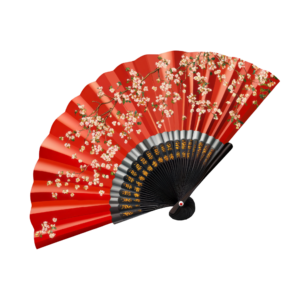Japanese Lessons
Japanese Language
Japanese (日本語 – Nihongo) is the official and main language used by approximately 127 million people in Japan. Japanese is the 9th most spoken language in the world.

JAPANESE LANGUAGE PROFICIENCY TEST
The Japanese Language Proficiency Test (JLPT, 日本語 能力 試 験, Nihongo Nōryoku Shiken) aims to assess and certify proficiency in the Japanese language and consists of five levels of increasing difficulty: N1, N2, N3, N4, and N5.
The N5 level is aimed at beginners, while the highest proficiency level is N1.
The exams are held twice a year in Japan and once a year in other countries, including Greece (specifically, on the first Sunday of December).
The Japanese written language is considered to be one of the world’s most complex and difficult to learn languages. However, there are a number of attributes that will make learning the language a little easier; just like English, Japanese has no gender and there is no differentiation between plural and singular.
The Japanese Written Language
The biggest and most obvious challenge when it comes to learning Japanese is learning the characters. These have no relation to languages of a Latin origin and therefore it really is a case of having to learn and memorize them.
Japanese uses four different systems of writing, these are: kanji, hiragana and katakana.

Guarantee your excellence!
Preparation and success in the exams
- Level N1
- Level N2
- Level N3
- Level N4
- Level N5
The N1 level is the highest certification of Japanese language proficiency. At this level, candidates are tested on advanced grammar structures and approximately 2,000 Kanji characters. They are expected to know around 10,000 words and possess the ability to live and work in Japan.
- READING
- One is able to read writings with logical complexity and/or abstract writings on a variety of topics, such as newspaper editorials and critiques, and comprehend both their structures and contents.
- JapanProfiLevel1ReadingDesc2
- LISTENING
- One is able to comprehend orally presented materials such as coherent conversations, news reports, and lectures, spoken at natural speed in a broad variety of settings, and is able to follow their ideas and comprehend their contents comprehensively. One is also able to understand thedetails of the presented materials such as the relationships among the people involved, the logical structures, and the essential points.
At the N2 level, candidates are tested on advanced grammar structures and approximately 1,000 Kanji characters. They are expected to know around 6,000 words, write and read about everyday topics, understand news reports, and participate in general discussions.
- READING
- One is able to read materials written clearly on a variety of topics, such as articles and commentaries in newspapers and magazines as well as simple critiques and comprehend their contents.
- One is also able to read written materials on general topics and follow their narratives as well as understand the intent of the writers.
- LISTENING
- One is able to comprehend orally presented materials such as coherent conversations and news reports, spoken at nearly natural speed in everyday situations as well as in a variety of settings, and is able to follow their ideas and comprehend their contents. One is also able to understand the relationships among the people involved and the essential points of the presented materials.
At the N3 level, candidates are tested on complex grammatical elements and approximately 650 Kanji characters. They are expected to know around 4,000 words, be able to participate in discussions on social topics, and have the ability to write and read complex texts and sentences.
- READING
- One is able to read and understand written materials with specific contents concerning everyday topics.
- One is also able to grasp summary information such as newspaper headlines.
- In addition, one is also able to read slightly difficult writings encountered in everyday situations and understand the main points of the content if some alternative phrases are available to aid one’s understanding.
- LISTENING
- One is able to listen and comprehend coherent conversations in everyday situations, spoken at near-natural speed, and is generally able to follow their contents as well as grasp the relationships among the people involved.
At the N4 level, candidates are tested on basic grammatical elements and approximately 300 Kanji characters. They are expected to know around 1,500 words, be able to participate in everyday conversations, and have the ability to write and read simple texts and sentences.
- READING
- One is able to read and understand passages on familiar daily topics written in basic vocabulary and kanji.
- LISTENING
- One is able to listen and comprehend conversations encountered in daily life and generally follow their contents, provided that they are spoken slowly.
At the N5 level, candidates are tested on basic grammatical elements, the ability to write with Hiragana and Katakana, as well as knowledge of approximately 100 Kanji characters. They are expected to know around 800 words, be able to engage in simple conversations, and have the ability to write and read short and simple sentences.
- READING
- One is able to read and understand typical expressions and sentences written in hiragana, katakana, and basic kanji.
- LISTENING
- One is able to listen and comprehend conversations about topics regularly encountered in daily life and classroom situations and is able to pick up necessary information from short conversations spoken slowly.

Frequently Asked Questions
What is the Japanese alphabet?
In Japanese, three different writing systems are used, namely kanji, hiragana, and katakana.
Hiragana is a syllabic writing system. It is used for writing simple words, conjugating verbs, and rendering particles.
Katakana is used to represent foreign words in Japanese.
Kanji are based on the Chinese ideogrammatic writing system and consist of approximately 2,000 characters. Kanji were introduced into Japanese from Chinese in the 6th century AD.
How difficult is it to learn the Japanese language?
The written Japanese language is considered one of the most complex languages in the world. However, there are certain characteristics that make learning Japanese easier: as with English, Japanese does not distinguish between genders of nouns, and there is no differentiation between singular and plural forms.
The biggest and most obvious challenge when learning Japanese is mastering the writing system of the characters. These characters have no relation to Latin-based alphabets, and as a result, their learning is based solely on memorization and practice.
What are the certifications/exams for the Japanese language?
The Japanese Language Proficiency Test (JLPT, 日本語能力試験, Nihongo Nōryoku Shiken) aims to assess and certify proficiency in the Japanese language. It consists of five levels of increasing difficulty: N1, N2, N3, N4, and N5.
Level N5 is designed for beginners, while the highest proficiency level is N1.
The JLPT is conducted twice a year in Japan and once a year in other countries, including Greece, specifically on the first Sunday of December.
How long will it take for me to be able to communicate in Japanese?
Having completed the beginner level N5, you will have the ability to understand and participate in simple everyday conversations.

